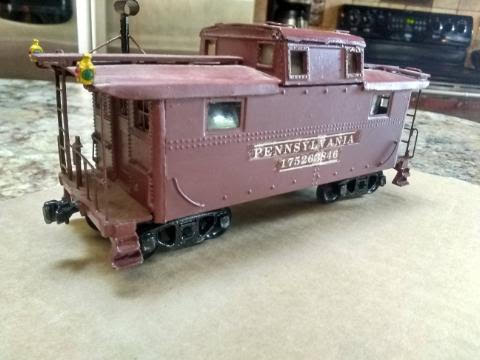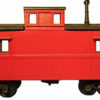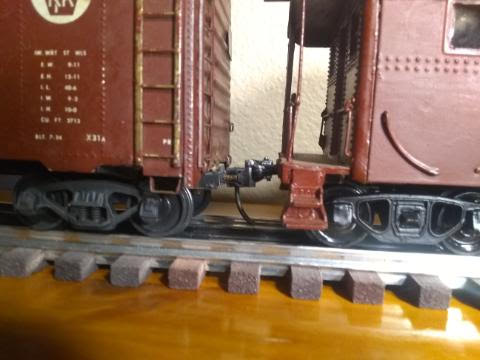That model kit was a staple of the Walthers line for a long, long time. I think they still offered it right up until they sold off the O Scale in the 80s or 90s, and started making it in 40s or 50s.
The ones I have seen from later runs have sheet metal, I think Aluminum, roof panels that are glued to a wooden roof that is inside the body at the top. Earlier ones had a hard cardstock sheet to make the roof panels.
the pin and cotter pin truck mount was common for the Walthers kits and I think in O scale in general into the late 50s or longer. The pin is shaped like a flathead screw head and is inserted in the bolster before the bolster is screwed to the underbody. I think the idea in those days of dummy couplers, you could lift the car body to uncouple the car without lifting the truck off the track. You would leave enough play on the pin before the cotter to let the couplers clear. It might be possible to unscrew the bolsters, and remove the pin, then install different trucks with wood screws into the underbody through the bolster. I can't remember if the bolsters is part of a larger casting for the end platforms. If so, then that is not so easy. By the way, those are original Walthers trucks also.
From the photos it looks like a nice assembly job.
I think I might still have complete new kit sitting on s a shelf someplace.
The configuration of the stack, the end rails, and the brake handle, instead of wheel, make it a plain as-built N5 as opposed to the later N5B and rebuilt N5s. It is an ok model of that car. That road number is one I have never seen however. All the references I have seen were 6 digit and started with 477xxx. There were a few 476993 to 476999 also. The N5 were numbered in the series 477000-477617 according to a "condensed roster 1957".
![]()















